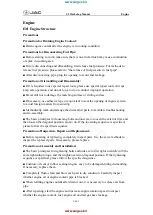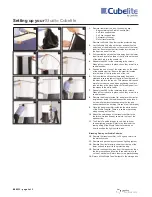
6
TEBS E
GIO functions
70
• Change to the specified value for the nominal level (e.g. by selecting a memory
level)
Unlike conventional air suspension systems, ECAS controls not only the normal
level but also any other predefined level. Therefore a level which is set for loading
or unloading processes is assumed to be the nominal level.
In other words: If the loading condition changes, the vehicle remains at the set
level, whereas in vehicles with conventional air suspension this level must be ad-
justed manually or the vehicle body lowers when laden and raises when unladen.
If the power supply is interrupted or if the air supply is insufficient, e.g. when the ig-
nition is switched off, no further nominal level control occurs when the ignition is
switched off.
By using the speed signal the electronic level control system differentiates between
static and dynamic changes in the load, unlike conventional air suspension sys-
tems. A level change is adjusted with a delay while driving. Otherwise readjusting
the vehicle would waste compressed air in certain conditions - when the suspen-
sion is compressed on roads with potholes for example.
Static wheel load change
Dynamic wheel load change
Application
•
At load change
•
When stationary
•
At low vehicle speeds
•
Dynamic wheel load changes are caused
by road irregularities at higher speeds.
•
The wheel load changes on an uphill or
downhill stretch, which affects the control
performance.
Control
functions
Check the actual value and
make correction by pumping
up or deflating the respective
air suspension bellows in
short intervals (1x per sec-
ond) with the electronic level
control
Extended ECAS
parameters, control delay
.
Dynamic wheel load changes are usually
balanced by the compliance behaviour of the
support bellows. In this case, bellow charging
or venting would not be desirable because
only the bellow that is isolated has almost
constant suspension properties.
When the excess air is exhausted from the
bellow during rebound action, it must be re-
placed again during compression which in-
creases compressor load and fuel consump-
tion. For this reason, the regulation is checked
in larger intervals when the vehicle is moving
at higher speed - usually every 60 seconds.
The comparison of actual value to the nominal
value is made continuously.
Comment
Because not every unevenness on the road is
compensated, e.g. when driving on roads in
bad condition, less air is consumed by the
electronic air suspension than by conventional
level control systems with levelling valve.
6.3.2 Normal
level
Normal level I (normal level)
Driving level I (normal level) refers to the nominal level defined by the vehicle
manufacturer for driving under optimal conditions (optimum body height).
Normal level I is defined by the overall vehicle height, which is bound by legal
guidelines and the height of the vehicle centre of gravity that is especially important
for driving dynamics.
















































